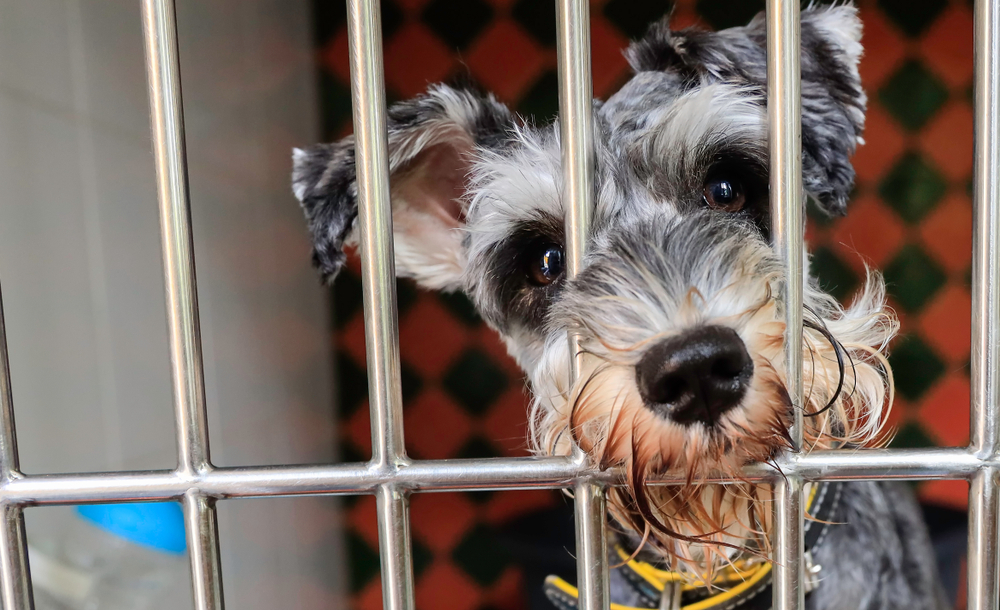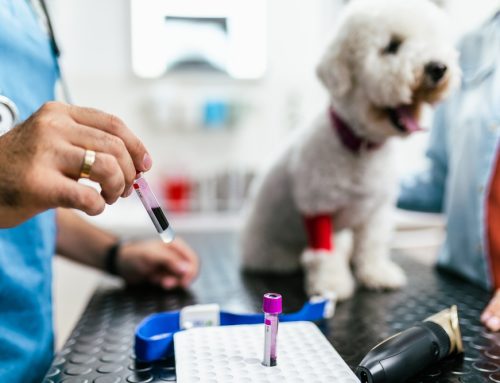While you may wish you could take your pet everywhere, this isn’t always feasible, but boarding your pet is a convenient option when you have to leave your four-legged friend behind. Our Animal Hospital of Stoney Creek team knows how stressful boarding can be for you and your pet, and we provide tips to help prepare your pet for the experience.
#1: Assess your pet’s personality
Typically, sociable pets who enjoy interacting with people and other pets adjust better to boarding than shy pets. Pets who are anxious or aggressive when exposed to unfamiliar people or pets may be better suited to other options, such as a house sitter, rather than a boarding situation. If this is not possible, ensure you choose a boarding facility that will house your pet apart from other pets.
#2: Schedule a wellness examination for your pet
Pets are excellent at hiding illness, and you don’t want your pet to experience a veterinary emergency while boarding. Contact Animal Hospital of Stoney Creek, so we can evaluate your pet and ensure they are in tip-top shape. These visits are also beneficial because most boarding facilities require that your pet’s vaccinations be up to date, and many also require a negative fecal test to ensure your pet can’t transmit parasites. Check with the boarding facility to determine their requirements before your pet’s wellness visit, so you don’t have to make multiple trips to the veterinarian.
#3: Research the pet boarding facility
Before leaving your pet at a boarding facility, you want to ensure the establishment is reputable, offers the services you require, and provides a safe, stress-free environment that meets your pet’s needs. This requires research that may involve:
- Asking for recommendations — Reach out to friends and family members to see if they can recommend a boarding facility. You can also ask our team to help find a reputable facility.
- Reading reviews — Find the boarding facility online, and read reviews from previous customers. Read positive and negative feedback, and pay special attention to issues mentioned frequently.
- Visiting the facility — Visit the facility and consider the following:
- Is the area clean?
- Does every pet have access to fresh, clean water?
- Are the pets kept in cramped conditions?
- Do the pets have toys to play with and comfortable bedding?
- Are workers monitoring the pets?
- Do the employees seem happy to interact with the pets?
- Asking questions — During your visit, ask the staff questions to ensure their facility can meet your needs.
#4: Schedule a trial visit for your pet
If your pet is not used to being away from home, schedule an overnight trial visit to help them get to know the staff and become acclimated to their new surroundings. During their stay, ask the employees to note any issues or concerns that should be addressed before a longer stay.
#5: Pack a bag for your pet
You wouldn’t go away for a trip without packing a bag, and your pet is no different. Clearly label all items with your name and include:
- Medical records — Provide your pet’s medical records, including their proof of vaccinations, and any health issues.
- Food — Provide your pet’s food to prevent a sudden dietary change that could result in gastrointestinal upset. Place meal portions in baggies to make feeding your pet easier for the staff.
- Leash and collar — Your pet should wear a collar and identification tags with your current contact information. Also, provide a leash to make walking your pet easier for the staff.
- Treats — Ensure you provide a good supply of your pet’s favorite treats.
- Medication — If your pet is on medication, provide enough for their stay, plus an extra few days. Give the staff clear instructions on how and when to administer the medication.
- Toys — Ensure you bring your pet’s favorite toys.
- Clothing — Consider providing recently worn clothing that will comfort your pet with your scent and remind them of home.
#6: Discuss your pet’s special needs with boarding facility staff
If your pet has special needs, ensure you discuss these issues with the boarding facility staff. Examples include:
- Your pet has a noise phobia — If your pet is frightened by thunderstorms or other loud noises, let the staff know, so they can provide comfort and monitor your pet to prevent self-injury.
- Your pet has separation anxiety — If your pet is anxious when left alone, the staff may be able to spend extra time with your pet. If not, you should know this before leaving your pet at the facility.
- Your pet shows aggression toward other pets — In this case, your pet may need to be isolated from other pets.
- Your pet has a medical condition — If your pet has a medical issue, the staff needs to understand the signs that will indicate their condition is worsening. You also must provide your veterinarian’s information, so they can be contacted for professional advice.
#7: Remain calm when leaving your pet

Pets pick up on your emotions, and if you are dramatic and overly expressive at the boarding facility, they may become stressed and anxious. Stay calm and upbeat and quickly say your goodbyes.
If you need to board your pet, contact our Animal Hospital of Stoney Creek team, so we can give them a clean bill of health before their stay.








Leave A Comment